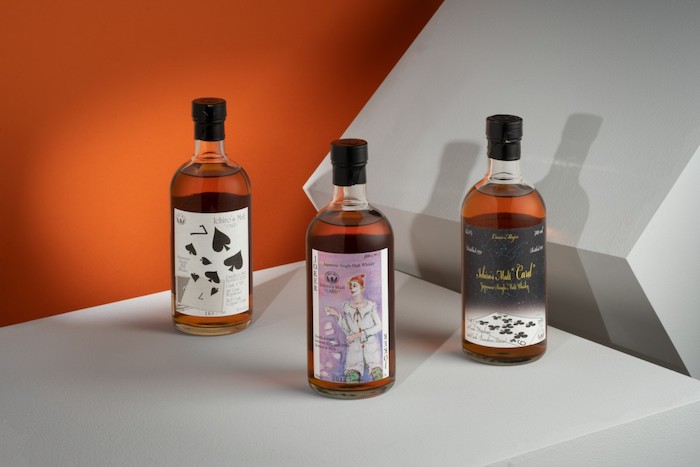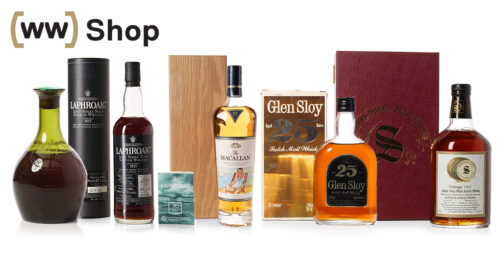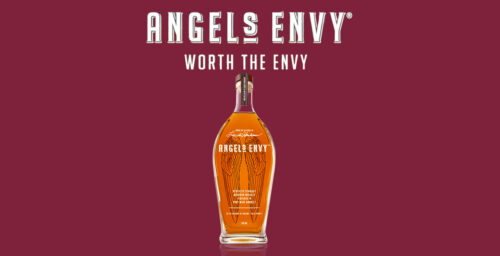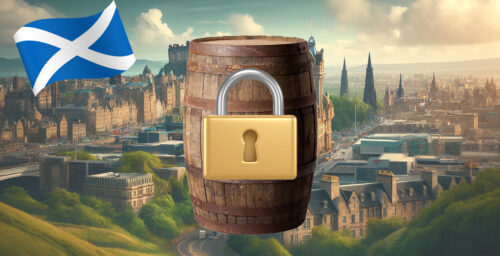The popularity of Japanese whisky is having a meteoric rise on the secondary whisky market.
As an example, according to online auction leader Whisky Auctioneer, there’s been a four-thousand-percent increase in the price of Yamazaki Sherry Cask now compared to the first bottle they sold in 2013.
In fact, Whisky Auctioneer has sold more than 50,000 bottles of Japanese whisky over the past decade. And their resident spirits specialist, Joe Wilson, recently visited with The Whiskey Wash to help provide insight into the rise in popularity and what are some of the most coveted Japanese whiskies on the site.

The Whiskey Wash: Tell us a little about your path in the whisky industry.
Joe Wilson: “My earliest experience of whisky was at a millennium New Year’s Eve party with my parents when I was young. The party was in an area prone to blackouts and I remember sneaking a sample of Laphroaig 10-year-old when nobody could see. It was a moment of instant confusion and intrigue in equal measure, and easily one of the most vivid memories of sensory overload from my entire childhood (alongside visiting Disneyland and being able to hear properly for the first time after an operation to fix my ear canals). Your first Laphroaig is something that always stays with you, and this one certainly did.”
“My professional journey into whisky started years later when I was working in a bar in Glasgow to help pay for my master’s degree. It had a great selection of whisky and I always remember finding my eyes drawn to the array of different colors, labels and bottle shapes. My degree was in Museum Studies and after graduating, I worked on various projects focussed on devising exhibition practices that helped museum audiences better understand the meaning and significance of what they were looking at. When the opportunity to work with Whisky Auctioneer arose, it was a perfect way for me to blend these two passions and I believed my skills from the museum world provided a perfect platform to build a more engaging and informative auction experience upon.”
TWW: Historically, where has Japanese whisky fit into the overall spirit genre?
Joe Wilson: “Japanese whisky has a different origin to many other spirits and by comparison is a relative newcomer. Most spirits have long associations to their countries of production and tend to have evolved from cottage industries to become the big business they are today. In Japan, this is true of spirits such as Shōchū, but not of Japanese whisky, which today is produced in the same way as Scotch, using methods imported by businessmen in the early 20th century.”
“The spirit, therefore, has fewer historic associations to the rural and working classes, and was required from its outset to be a profitable endeavor for its early investors at companies like Suntory and Nikka. The result of this is that there are fewer budget brands in Japanese whisky (particularly following stricter regulation of the category in 2021) and the category is very much viewed as one of the more premium spirits in the global genre. This, obviously, is greatly helped by the quality of the product, and has been heavily leaned into by distillers over the past few decades.”
TWW: When did the market first realize the investment potential of whisky in general?
JW: “Investment potential is a natural evolution of collectability as an attribute for goods such as whisky, and in this case it probably has its origins in the 1980s with the emergence of a connoisseur class of single malt enthusiasts. This created a demand upon distillers for more than their proprietary offerings, resulting in limited releases and single cask bottlings that were both finite and harder to find, encouraging people to seek and collect.”
“Independent bottlers played a key role in this by releasing single malts from distilleries such as Brora and Port Ellen that had closed (at the time presumably for good) in the years prior, further feeding into the idea of something that was more than just a drink, but something of historical importance.”
“The first official bottling to really cement the idea of a collectible release, however, is generally considered to be the Black Bowmore. Released in 1994, it was considered very expensive at the time at £80 and was not your average midweek dram. It was, however, considered to be exceptional by those that did try it, only encouraging people to buy more. It is perhaps no coincidence that 1994 happened to be the same year that Bowmore was acquired by Yamazaki distillery owner, Suntory.”
TWW: What makes Japanese whisky so collectible, and why are you seeing such a jump in prices now?
JW: “The current drive among collectors in Japanese whisky is a classic case of demand far-outstripping supply. Up until the last few years, there were still only a handful of distilleries and several of the biggest names on the market were no longer in operation. This is coupled by a period of reduced production by the established distillers at the turn of the century and limited early production at newer ones.”
“Chichibu is a great example of the latter. One of the most collectible names in Japanese whisky currently, its smaller early capacity has curtailed it mostly to single cask bottlings, meaning it has a high turnout of releases but only in very small quantities. This is also reflected by distilleries like Yamazaki and Yoichi, for example, where the core ranges have been drastically reduced (for the time being at least) in favor of more regular limited editions.”
TWW: For future collectors, what advice would you give for building a compilation of Japanese whisky?
JW: “My advice to anybody collecting any whisky is to ensure that you inform yourself first-hand by trying as much as you can and sharing your own thoughts and opinions on them with like-minded others. With Japanese whisky, this isn’t always going to be easy as there are certain names like Karuizawa and Hanyu that are prohibitively expensive for the drinker. However, the Japanese industry is very much on the rise and there are new distilleries opening or releasing their first single malts all the time. This is as good a time as any to get involved in the spirit as there is an opportunity to experientially chart the rise of what may be the next golden generation of Japanese distillers.”
TWW: What are the most searched for Japanese whiskies on Whisky Auctioneer?
JW: “The top five most-searched for Japanese whisky brands of all time on our platform are: 1. Chichibu, 2. Hibiki, 3. Karuizawa, 4. Yamazaki, 5. Hanyu.”
“Chichibu is the third most searched brand of all-time, after The Macallan and Springbank – just beating out Bowmore.
“The top five most-searched for Japanese whisky brands of 2023 so far on our platform are: 1. Hibiki, 2. Kariuzawa, 3. Yamazaki, 4. Chichibu, 5. Kanosuke.”
“The top four of these fit within the overall Top 10 brands searched on Whisky Auctioneer, meaning that 40 percent of the most searched for brands on our platform in 2023 so far are Japanese whisky.”
TWW: What’s the most expensive bottle of Japanese whisky sold on Whisky Auctioneer?
JW: “The most expensive bottle of Japanese whisky sold on Whisky Auctioneer is the Yamazaki 55 Year Old. The 2020 release (of which only 100 were released exclusively in Japan) is the oldest Japanese single malt ever bottled (at the time of writing) and sold for a hammer price of £425,000 in 2021 on Whisky Auctioneer.
TWW: When did Whisky Auctioneer first start selling Japanese whisky?
JW: “Our very first auction in 2013 featured one bottle of Japanese whisky – a single cask of Karuizawa distilled in 1971 and bottled at 36 years old. It sold for a hammer price of £700. Three years later, in 2016 (the last time we sold this exact expression), the bottle reached a hammer price of £3,050! To date, we’ve now sold over 50,000 Japanese whiskies, with our monthly auctions averaging around 800 lots from Japan.”
“In 2017, we hosted an exclusive Karuizawa whisky auction featuring the world’s largest known collection of Karuizawa at the time. The collection, comprising 296 bottles, smashed its pre-sale estimate of £500,000 to fetch a hammer price of £770,000. Within that collection, a single bottle of Karuizawa 1960 known as ‘The Archer,’ one of just 41 bottles originally released for £12,000 in 2013, sold for £100,100 – setting a new UK and European record at the time for the most expensive single bottle of Japanese whisky sold at auction.”
“Inspired by a meteoric rise of increasing interest in the Japanese whisky industry (so much so, it was reported to have created widespread stock shortages resulting in the withdrawal of many age statement ranges), we hosted another exclusive auction in 2019 – this time dedicated to a variety of Japanese whisky. More than 400 bottles featured in the auction, raising a total hammer price of £1,332,904 and breaking multiple auction records.”
TWW: Does Whisky Auctioneer see a particular pattern or specific uptake in bidding for Japanese whisky from buyers from particular regions?
JW: “We’ve seen a large increase in demand for Japanese whiskies on our auction site over the years, with buyers from the United Kingdom having the largest collector’s appetite, coming in as the top contributor (by both value and volume) in Whisky Auctioneer’s global sales of rare Japanese whiskies. Following the UK is the United States, Taiwan and Singapore. From 2019 to 2021, we witnessed the most significant order value increases against Japanese whiskies in the UK, Netherlands and Hong Kong.”








